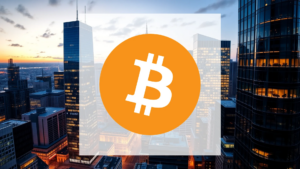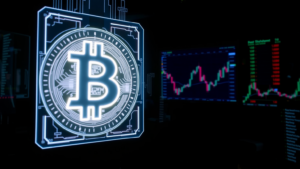XRP’s Watershed Moment: Record ETF Launch Meets Market Caution
A landmark achievement for XRP has been realized, yet the digital asset’s price action remains subdued. As the inaugural U.S. XRP exchange-traded fund (ETF) shatters records, drawing institutional capital in the hundreds of millions, the cryptocurrency itself is contending with significant short-term profit-taking. The critical question for investors is whether XRP is on the cusp of a major advance or if a corrective phase is imminent.
Institutional Capital Floods In
Behind the scenes, substantial money movements are occurring. On November 16, the XRP blockchain recorded 716 large-scale transactions, each valued at over $1 million. This represents the highest number of such “whale” movements in a four-month period. These transactions, totaling approximately $716 million, signal a substantial repositioning by major institutional players. This activity unfolded even as XRP’s spot price demonstrated stability, trading in a narrow band between $2.20 and $2.30.
The push for institutional adoption is being aggressively led by Ripple. The company’s acquisition of Hidden Road for $1.25 billion is a strategic move that establishes the first prime brokerage native to the cryptocurrency sector. This is a pivotal development for integrating XRP directly into conventional financial systems and workflows.
A Landmark ETF Debut
The institutional interest culminated in a historic event on November 13, 2025. The Spot ETF launched by Canary Capital achieved the most successful ETF introduction of the year, accumulating nearly $250 million in inflows on its first trading day. Its debut was so significant that it eclipsed the initial trading volumes of both Bitcoin and Ethereum ETFs, recording $58 million in volume. This serves as a powerful indicator of the substantial demand for XRP exposure through traditional investment vehicles.
The momentum appears set to continue. Financial analysts from Bloomberg assign a 95% probability that regulatory approvals for additional XRP ETFs will be granted by November 27. Industry specialists project that these new funds could channel an extra $5 to $7 billion into the XRP ecosystem by 2026.
The Path Ahead: Consolidation or Breakout?
Despite these powerfully positive fundamental developments, technical market indicators present a mixed picture. The Relative Strength Index (RSI), reading at 28.8, points to a market that is deeply oversold, which often suggests a potential rebound. However, concurrent selling pressure is undeniable. In a 48-hour window, large holders offloaded close to 200 million XRP tokens, moving over $400 million worth of the asset to exchanges—a classic pattern of profit realization following a major bullish event.
From a technical analysis perspective, a crucial support level is being established at $2.20. The next significant resistance point that traders are watching is at the $2.50 mark. The central uncertainty is whether the strength of the fundamental news—particularly the impending ETF decisions—will be sufficient to overpower the current short-term downward trend. The market’s direction could become clear within days as these anticipated regulatory announcements are made.
Cardano’s Contradiction: Network Strength Amid Price Weakness
As cryptocurrency markets experience broad turbulence, Cardano finds itself at a critical juncture. The ADA token recently plunged to $0.49, establishing a new 52-week low in a dramatic sell-off. Yet beneath this concerning price action lies a more complex narrative where fundamental metrics tell a surprisingly positive story that contrasts sharply with market sentiment.
Institutional Accumulation Defies Market Sentiment
Despite recent price declines, major investors appear to be viewing the weakness as a buying opportunity. Between November 7th and 10th, whale entities accumulated a staggering 348 million ADA tokens valued at over $204 million. This represents nearly one percent of the total supply changing hands in just four days, suggesting strong institutional confidence in Cardano’s long-term prospects.
The staking ecosystem further demonstrates network health, with 59% of circulating ADA tokens currently staked across more than 2,750 active stake pools. This substantial participation rate underscores the decentralized nature of the blockchain while providing underlying security.
DeFi Expansion Continues Unabated
While ADA’s price struggles, Cardano’s decentralized finance ecosystem is experiencing remarkable growth. The Total Value Locked (TVL) surged 28.7% during the third quarter, reaching $423.5 million—the highest level since early 2022. Individual protocols showed even more impressive gains, with Liqwid witnessing a 50.8% TVL increase while Minswap dominated decentralized exchange volume, capturing 74.7% of all DEX transactions.
Network activity metrics reinforce this positive trend. Daily active addresses climbed 19.2%, while transaction volume increased by 15.7%. Even market capitalization showed strength, growing 42.5% to $29.5 billion despite recent price depreciation.
Trading Incident Highlights Market Immaturity
A spectacular trading error recently exposed the risks inherent in illiquid cryptocurrency markets. A wallet owner who had been inactive since 2020 exchanged 14.4 million ADA tokens worth $6.9 million for only 847,695 USDA tokens, resulting in a $6 million loss due to extreme slippage. The transaction temporarily drove the USDA price to $8 instead of its intended $1 peg before market mechanisms corrected the imbalance.
While this incident underscores the dangers of large transactions on decentralized exchanges, it also reveals growing activity within the Cardano ecosystem. The market’s ability to quickly normalize following such disruption demonstrates developing resilience.
Adoption Momentum Builds Through Strategic Partnerships
Cardano’s practical utility continues to expand through strategic initiatives. The recently launched Cardano Card, developed through a partnership between EMURGO and Wirex, marks a significant step toward mainstream adoption. This development enables over six million Wirex customers across 130 countries to spend ADA and other cryptocurrencies anywhere Visa payments are accepted.
On the technical front, Input Output Global is developing the Ouroboros Phalanx upgrade, which aims to improve transaction settlement times by up to 30%. Additionally, Cardano’s alignment with the ISO-20022 standard positions it favorably for institutional adoption in cross-border payment systems.
The critical question remains whether Cardano can translate its fundamental strength into price recovery. The foundation for a potential trend reversal appears to be forming, leaving market participants to determine if and when sentiment will align with the network’s underlying metrics.










Gold’s Tug-of-War: Conflicting Forces Shape the Precious Metal’s Path
Gold, the classic safe-haven asset, finds itself caught in a crossfire of competing market dynamics. While geopolitical tensions and skittish investors typically provide upward momentum, the precious metal is being pressured by a surprisingly resilient US dollar. The central question for traders is which of these powerful forces will ultimately prevail.
Technical Picture Darkens
From a chart perspective, gold’s outlook has recently deteriorated. A sharp sell-off last week allowed bearish sentiment to establish a fresh downward trend. The current spot price stands at $4,081.40, placing it nearly 3% below the 52-week peak of $4,201.40.
Market observers are now closely watching whether bullion can maintain the crucial support level around $3,940. The coming sessions will determine if fundamental uncertainties can reinvigorate the metal’s appeal or if concerns regarding interest rates and dollar strength will dominate trading activity.
The Fundamental Battlefield
Two primary economic drivers are currently wrestling for control over gold’s valuation:
Consequently, market participants are intensely focused on upcoming US economic indicators. These data releases are expected to provide critical clues about the monetary policy direction the Federal Reserve will adopt in the months ahead.